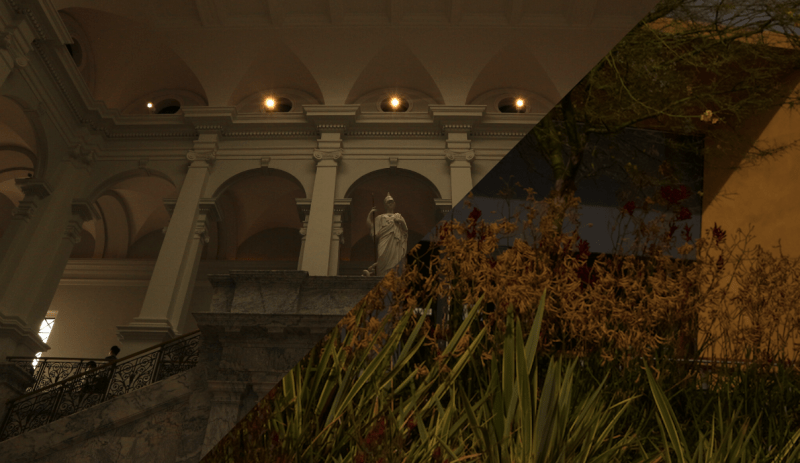On my computer screen, it glows: “Eustache de Saint-Pierre, left hand, final state” by Auguste Rodin. A veiny, bronze hand sculpture — its fingers grasping at nothing like an arcade claw crane whose prize slipped away. I am reminded of what an art history professor once told me about Rodin, about how he loved hands, how he often sculpted them disembodied because he thought their bended bones, wrinkled skin and cracked nails told emotional stories. Perhaps this 200-year-old hand sculpture is trying to tell a story about want, about reaching for something that is just beyond reach.
Right now, amid the coronavirus pandemic, want is as pervasive as ever. As people all over the world take protective measures such as social distancing, all the while they long for people and places, sometimes thousands of miles away.
“Eustache de Saint-Pierre, left hand, final state” is one of many Rodin sculptures currently on view at the Cantor Arts Center, a place that many art lovers and museum-goers in the Stanford community might wish to be. Although that is not possible right now, at least not in person, there are ways of visiting online.
“Though it’s important for us to remain physically apart for now, we seek to come together in new ways,” said Susan Dackerman, the John and Jill Freidenrich Director of the Cantor.
Stanford Art Museums’ “Museum from Home” initiative allows people to explore and engage with the Cantor Arts Center and the Anderson Collection from a distance. By going to Stanford Art Museums’ website, people can access a collection of multimedia content, ranging from video lectures to digital photograph collections.
It’s not the same as standing in the high-ceilinged, marbled lobby, or seeing the brushstrokes of a painting up-close or watching the way an installation, like Josiah McElheny’s Island Universe, glitters when it catches the sun.
“We know there is no replacement for seeing art in person…” explains Jason Linetzky, the Director of the Anderson Collection, in a video posted on YouTube. But through “Museums from Home,” people can view the artwork inside of Stanford Museums from the outside.
“Because the museum is an essential resource for scholars … we are working hard to make sure students and faculty can continue to learn from the objects in our collections wherever they may be in the world,” Dackerman said. “Watch, listen, explore and read”; these are the four categories into which the museums’ online resources are organized.
One can watch a one-minute time-lapse of Richard Serra’s gigantic steel sculpture “Sequence” being reinstalled in the Cantor’s lawn after its three-year loan to The San Francisco Museum of Modern Art. Or, one can listen to or read the transcript of an interview with the late figurative artist Nathan Oliveira, whose paintings cover the walls of Windhover, Stanford’s on-campus contemplative center. The “explore” section allows digital visitors to flip through Richard Diebenkorn’s sketchbooks, and view over 1000 of his drawings. They can also travel back in time to 1980s New York City through Andy Warwhol’s black-and-white photographs of “street scenes” and nightclubs. These are just some of the many resources available.
There are more interactive offerings too, such as the Stanford Arts Map, which marks outdoor art all across Stanford campus, and “Adventures on Paper,” which are printable coloring pages of contemporary artworks from the Anderson Collection. In terms of programming, while months of scheduled events have been canceled, “Second Sunday,” a popular family-oriented, art-centered event that usually happens the second Sunday of each month, will continue in a virtual format.
“The Cantor is no stranger to overcoming adversity,” Dackerman said.
The museum has closed several times throughout its history: once from 1906 to 1909 due to damage from the San Francisco Earthquake, later in 1945 for nearly 10 years of renovation and again from 1989 to 1999 due to damage from the Loma Prieta Earthquake.
“The museum’s first century of existence [was steeped] in sorrow and destruction,” Dackerman said. “[But]…After each of these major events, the museum persevered and came back stronger. This time will be no exception.”
Contact Chasity Hale at chashale ‘at’ stanford.edu.
